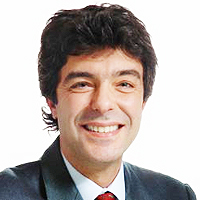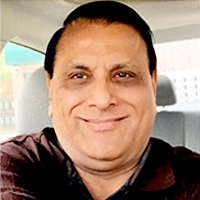Psychological distress in a social media content moderator: A case report
Published on: 12th October, 2020
OCLC Number/Unique Identifier: 8683061313
The expansion of social media platforms has given birth to a specific professional category in charge of « sanitizing » social media and keeping it free of “inappropriate” content. These content moderators, as a result of being constantly exposed to potentially traumatic images, may be at risk of developing stress-related symptoms. Here we present the case of a social media content moderator who experienced intrusive images, anxiety symptoms and insomnia.
Literature about this subject is very scarce, while the need is increasing to assess this phenomenon and set up strategies of monitoring, counseling and treating this category of workers.
Key points
The expansion of social media platforms has given birth to a specific professional category: content moderators.
As a result of being constantly exposed to potentially traumatic images, content moderators may be at risk of developing stress-related symptoms.
The need is increasing to assess this phenomenon and set up strategies of monitoring, counseling and treating this category of workers.
Assessment of knowledge, practice and associated factors towards prevention of novel corona virus among clients attending at Debre Tabor General Hospital, Debre Tabor Town, North West Ethiopia, 2020: Institutional based cross-sectional study
Published on: 7th December, 2020
OCLC Number/Unique Identifier: 8872655439
Background: Corona virus disease is a highly infectious disease caused by the newly innovated corona virus. An emerging respiratory disease was abbreviated as COVID-19, after it has been first reported in December 2019 in Wuhan city of China. Ethiopia Ministry of health initiated multidisciplinary approach to tackle COVID-19 of which awareness creation is the main. The aim of this study is to assess knowledge, practice and associated factors towards prevention of novel corona virus among clients in Debre Tabor general hospital, Northwest Ethiopia, 2020.
Methods: Institution based cross sectional study design was conducted in Debre Tabor General hospital from May 15 to May 30, 2020. A structured questionnaire was used for data collection. The data were entered into epi data version 4.4 and exported to SPSS window version 25 for analysis. Binary and multivariable logistic regression was fitted. Odds Ratios with 95% Confidence interval and p - value ≤ 0.05 were considered to assert significance.
Result: A total of 345 clients were analyzed and the response rate was 96.4%. The mean age was 32.95 with S.D ± 13.18 years. Majority of the respondents were male (75.7%). Among the study participants 54.2% with (95% CI: [49.0, 59.2%]) and 49.0% with (95% CI: [43.5, 53.4%]) have good knowledge and god practice on COVID-19 preventions respectively. Sex AOR: 4.33 (2.06, 9.09), family size AOR: 2.49 (1.01, 6.15 and heard from social media AOR: 2.78 (1.21, 6.39) were significantly associated with knowledge of respondents. Knowledge AOR: 3.11 (1.59, 6.10) was significantly associated with practice of clients. Residency and those heard from TV were significant variables for both.
Conclusion and recommendation: In this study the overall knowledge and preventive practices of the respondents were found to be low. Sex, family size, residency and sources of information were associated factors for knowledge. In addition to this knowledge was significant factor for practice. Health education programs aimed at mobilizing and improving COVID-19 related knowledge and practice intend to be strengthened.
Predicting physical symptoms through expressions of loneliness and anxiety in individuals utilizing social media during SARS-CoV-2
Published on: 25th April, 2022
The effect of the novel coronavirus (SARS-CoV-2) pandemic has produced significant health concerns negatively impacting individuals. As the ongoing and constantly changing nature of SARS-CoV-2 continues, the unique characteristics of this pandemic trend toward anxiety and loneliness as significant behavioral health outcomes. Furthermore, the SARS-CoV-2 pandemic has significantly impacted the utilization of social media platforms such as Twitter. Utilizing over 1.6 million tweets from approximately 988,760 Twitter users geolocated in Washington state from the University of Pennsylvania’s publicly available Twitter database (from March 2020 to March 2021), this study evaluated the impact of SARS-CoV-2 by using expressions of loneliness and anxiety to predict mental and physical symptoms. Bivariate correlations revealed expressions of loneliness were correlated to trouble breathing while expressions of anxiety were correlated to skin lesions, body aches, flu-like, seasonal cold, trouble breathing, nausea or diarrhea, fever, chills, and cough. Multiple multivariate linear regressions were completed, and a significant regression equation was found in predicting trouble breathing symptoms on expressions of loneliness and anxiety, however, the proportion of variance was 8% of the observed variation in the model. Further implications revealed the importance of understanding mental and physical well-being during a public health crisis as well as the use of social media platforms as primary and supplementary stimuli.
Forensic Analysis of WhatsApp: A Review of Techniques, Challenges, and Future Directions
Published on: 18th June, 2024
WhatsApp, a widely used instant messaging application, has become a valuable source of digital evidence in forensic investigations. This review article explores the forensic analysis techniques, challenges, and future directions associated with WhatsApp. It covers the extraction and analysis of data from various sources, including mobile devices, cloud backups, and network traffic. The article discusses the challenges faced by forensic examiners, such as encryption, data volatility, and the need for proper validation of tools. It also highlights the importance of keeping up with the latest updates and changes in WhatsApp’s features and security measures. The future directions for WhatsApp forensics are explored, focusing on the development of more advanced and efficient analysis techniques, the need for standardization, and the importance of international cooperation in addressing cross-border investigations. This review provides insights for forensic examiners, researchers, and legal professionals involved in cases requiring WhatsApp evidence.
Analysis and Comparison of Social Media Applications Using Forensic Software on Mobile Devices
Published on: 22nd October, 2024
With the integration of mobile systems into daily life, social media applications used especially on Android and iOS platforms contain a significant amount of sensitive information. Social media applications on mobile systems have huge personal and sensitive content. Therefore, it is important to design effective techniques for forensic analysis of social media applications and to detect personal data. In this research, three different paid mobile forensic software and 4 different brands and models of smartphones with different operating systems were used and analyzed. The study shows that private messages, e-mails, time information, shared data, location and time information, and other personal data can be obtained by a forensic expert who performs an examination, and it is seen that one software can access the deleted data, but another software cannot access it. In proportion to the technology used in today’s world, mobile forensics incidents are increasing day by day, and a competitive environment is created among the software used to illuminate these incidents. With this competition, software companies dealing with forensic informatics are trying to obtain different data to illuminate forensic events that may occur due to the active use of social media accounts with the developing technology, and software that does not meet the needs in the face of this situation remains in the background. The criminal elements in the investigation areas of mobile forensics differ daily, and the scope of crimes in the virtual environment is expanding with the developing technology. Therefore, mobile forensic analysis applications should be successful in social media applications other than standard data.
Awareness and Knowledge of Specialists/Trainers and General Dental Practitioners about Medical-Related Osteonecrosis of the Jaws
Published on: 13th November, 2024
Introduction: Bisphosphonate-related osteonecrosis of the jaw (BRONJ) was first reported in 2003. In 2014, it was revealed that not only bisphosphonates but also other antiresorptive and antiangiogenic drugs can cause osteonecrosis (Medication-related osteonecrosis of the jaw: MRONJ). The aim of this study is to compare awareness and knowledge about BRONJ and MRONJ among specialists/trainers (ST), general dental practitioners (GDP); and dentists who graduated before and after the year 2014. Materials and methods: A survey regarding demographic information and knowledge about BRONJ and MRONJ was prepared and delivered to dentists via social media.Results: A total of 422 dentists participated in our study. It was observed that the awareness and knowledge about BRONJ and MRONJ were statistically higher in ST and in dentists who graduated in 2014 or later. In addition, when their specialties were compared to each other, it was seen that the awareness and knowledge of Oral and Maxillofacial Radiologists (OMR) and Oral and Maxillofacial Surgeons (OMS) were higher than others.Discussion: According to the results of this study, it was seen that the awareness and knowledge of the ST group were higher than GDP, maybe because they may encounter these cases more. In addition, dentists who graduated in 2014 or later had higher awareness, maybe because MRONJ was coined and entered the dentistry education curriculum in 2014. Awareness and knowledge of OMR and OMS were found higher may be because they encounter these patients more frequently. Planning educational strategies for all dentists, especially GDP and dentists who graduated before 2014 is very important for post-graduate dentistry education.
Digital Forensics and Media Offences – Investigate Synergy in the Cyber Age
Published on: 6th March, 2025
In the digital age, media offenses pose significant threats to privacy and reputation. Digital forensics plays a crucial role in combating these crimes by providing systematic methods and valuable knowledge. This work reviews how the field has proven effective in solving cases and preventing offenses, offering a solid career path for those interested in crime-solving and digital evidence collection.
Scrolling Towards Stress: The Negative Influence of Mobile Reels on Hypertensive Health
Published on: 30th May, 2025
I wish to draw attention to the rising influence of short video content on social media and its potential negative impacts on adult health, particularly its contribution to conditions such as hypertension.




